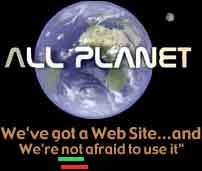| BACK to Larry MAIN PAGE
|
| Click here to Join
"Friends and Family List" larry-subscribe@skylineinteractive.com
|
 |
|
FRIENDS OF LARRY CONTRIBUTIONS Instruction Page
|
|
|
Larry Seehorn
Stories Page
|
LETTER from Steve Michaelson Oct 23, 2006 To: "Gabreal Franklin" <director@allplanet.com> Gabreal: Let me know if there
is some major block in Larry's career that I've left out. I'd like this
history/eulogy to cover his accomplishments and spirit.
Thanks, Steve
I will always be grateful to Larry as the person who opened doors and helped me along the way in my career. I've done that myself for quite a few people over the years but Larry was the one who taught me to listen to and respect everyone you meet. He truly cared about people and it's a lesson I'll never forget. We had an instant rapport as Larry always made people feel comfortable. Pretty soon he was Larry Sea-breeze and I was Stevie-One Pass, the name he gave me because of my techniques using masking tape to do repeatable frame accurate edits on a 2" piece of quad video tape. Of course computers for post-production hadn't been developed yet, but all of this created ideas for Larry which occupied his mind continuously. Larry left for a while
to work in Europe for HP and when he returned a year or so later he had
a plywood mock-up and tape with location footage of what was to be the
first portable "self contained" hand held broadcast video camera, the RCA
TK-76. I fell in love with the concept and freedom of location video and
decided to purchase one and start my own production company later to be
called One Pass Video. Once again Larry was always
Naturally, following the
cameras, it was apparent that one needed to do the editing and even though
there were computer editing systems already available from CMX, Larry felt
he could make a better mousetrap. With no capital, just heart, he launched
the aptly named EPIC. At night after a long day of sessions Larry rolled
what looked like a patient in intensive care out of the backroom and hooked
up the tubes and cables to bring it to life.
Along with the EPIC came
probably Larry's most influential early program for converting video frames
to film edge numbers. It was first used on the movie Apocalypse Now and
Larry became Francis Coppola's Director of Electronic Cinematography.
Then there was the MIDAS system. With personal computers now on the scene Larry, Garbreal Franklin and I started a company to offer logging, capture, scripting and database organization of clips on a PC. Like most of Larry's creations it was another brilliant idea.... fully 10 years ahead of its time. Control Video was next and this company had funding and management. As head of engineering Larry created his new touch screen editor "Lightfinger" that could cue up more VTR's with the touch of a single button than anybody could ever want. The EPIC was also part of Control Video. Larry had become accustomed to pushing himself day and night, tracking down bugs, rewriting code, trying new features and generally running himself into the ground. His stroke was an unfortunate consequence of this drive to get things done. No one worked harder than Larry, and in the end it became clear that he demanded more of himself than he was able to provide. Working his way back from a devastating stroke was typical Larry as well. This time he knew his limits a little better, and he was able to recover and carry on with his life in a productive way. A friend to all who knew him, a creative thinker who never worked "in the box", Larry Seahorn should be remembered as an extraordinary human being who's life was full with passion and drive at every level. We will miss you Larry, thanks for inspiring so many of us. Steve Michelson
|

a division of ALL PLANET NETWORK
ALL PLANET Incorporated
all rights reserved
Gabreal Franklin Associates reserve
intelectual property on selected materials
